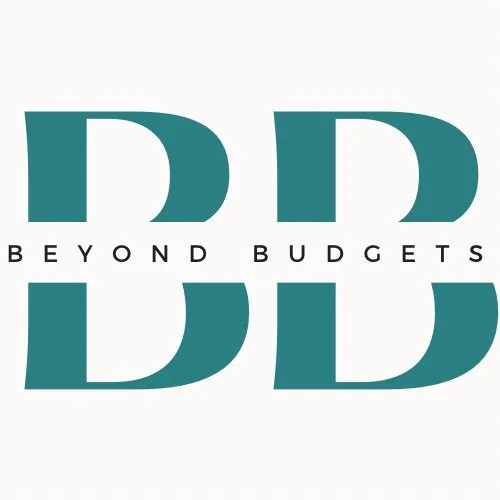Ready to Start Your Beyond Budget? Here’s Where to Start
A friend called recently and pleaded, “Help! I know I need a budget, but where do I start?”
If you’ve been reading a while, you already know that you can’t get where you want to go until you know where you are. So how does one… uh, do that exactly?
There are three important steps that you must follow for best results. It’s incredibly tempting to skip right over these and dive in. In fact, that’s exactly what most people do. And that’s exactly why most people don’t stick to their budgets. But you’re not most people.
Here are the steps, with more details for each to follow.
Create a Vision
Make Space for Grace
Look Back and Review
Ready to start your Beyond Budget? Start with these three important steps.
Creating a Vision
You can’t get where you’re going unless you know where it is you want to go. Imagine plugging “somewhere better than here” into your GPS and hitting START. What would you expect to see? A confused GPS, spinning with no results…
Don’t confuse your money GPS. Give it a destination first, or it’ll spin with no results.
Here’s an example. Let’s say you want to retire at 60 and travel the world for 5 years, hitting your bucket list places like Tokyo and Milan. After you’re done traveling, you want to settle down in a beachside cottage, living close to your kids and grandkids. You’ll host dinner for them all at your place as many Sundays as you can. You’d like to spend most of your days outside, combing the beach for shells and walking barefoot in the sand. After the sun goes down, you’ll warm your bones inside while crocheting or water coloring. You’ll finally buy that piano you’ve always wanted and take lessons to learn the basics. You slowly get better until one day you finally surprise your kids and grandkids with your first complete song.
Or another example, this time maybe more short-term/pre-retirement. You want to leave your 9-5 job and start your own business. You want to paint furniture and rent a booth space in the vintage shop in a small, nearby town to sell your wares. When you’re not creating artistic furniture, you want to eat great food that’s locally sourced, work on home DIY projects, and learn a new skill every year for the rest of your days.
Yet another example — because everyone is different. Let’s say you want to build a home off the grid in a beautiful remote town in the mountains. Your goal is to live a minimalist, efficient, self-reliant lifestyle with a veggie garden, dual purpose chickens and solar panels. You’ll drive through the mountains on the weekends and take the RV on lengthy road trips. You and your partner will have 1 dog and 2 cats that all go everywhere with you.
These visions are all unique. But they all have some things in common. They’re specific, vivid, and actionable. That’s my only rule for this step: Make your personal vision those three things and you’ll be much more likely to plot the course to your destination.
No confused GPS, y’all. Give it a specific personalized goal.
Make Space for Grace
Okay, so this step is essential. It’s good practice all the time anyway but especially in preparation for the next step. Neuroscience has shown that when your mind is in a state of shame it can trigger an inability to absorb helpful information. To prevent paralysis, give yourself grace. Commit to a shame-free review of your numbers. Tell a trusted loved one, or employ a coach or therapist to walk with you through the next step.
Look Back & Review
Now you have to look backward. Run through statements of the last two to three months of spending and categorize your purchases. Do a 90-day review. Try to keep categories pretty broad at first. Housing, food, utilities, clothes, etc. There’s plenty of time to narrow down, so don’t overcomplicate the process with too many categories.
You can use a budgeting app to help log each category -- or my preferred method: a spreadsheet. Yes, it’s more manual, but that’s a feature not a bug. If you have to plug the numbers in yourself, you’ll see every dollar spent, keeping you in touch with your habits and trends. Plus it keeps your financial data safer than an app will.
Once you have your spending history, it’s time to analyze. Put on your archaeologist hat and mine through your data. Spot trends, ask questions, and don’t to judge yourself. Make space for grace.
Once you can see your spending patterns, you can start to spot where your money goes. Does this spending align to your values? Or are you spending the bulk of your money on things or activities that bring you joy? Does your spending mirror the ideal need/want/save ratios (50/30/20 rule)? If your answers are yes to all, you’re nailing it! If they’re not, that’s okay! You’ve got an opportunity to make some tweaks to your choices and align your money to your values.
Now, it’s time to start building your budget. Do you need a tool to help you? Well you’re in luck! I have been working on and testing a customizable budget template just for you — it’s called the Beyond Budgets Blueprint, and you can download it for free here.


